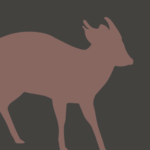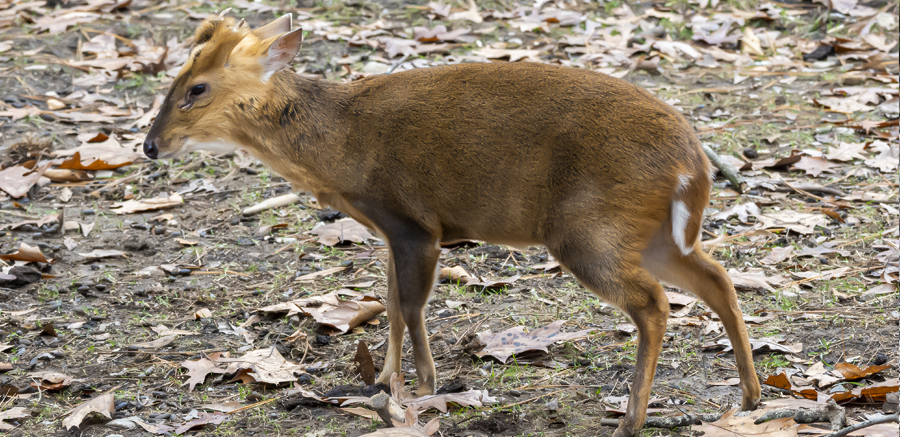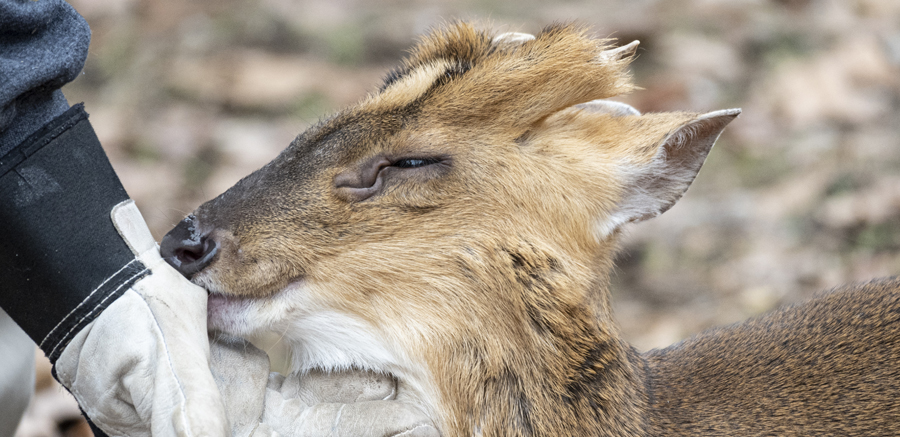
REEVE’S MUNTJAC
Known as the “barking deer” because of the dog-like sound they make.
PROFILE
Marvin was brought to us in August of 2021 by the Georgia Department of Natural Resources. He was found roaming around the parking lot of a school by two teachers who took him to Chattahoochee Nature Center (CNC). CNC did not have the ability to care for him for an extended period of time, so the GADNR asked if we would be able to house him. He was estimated to be about a year old at the time (August 2021) and full grown. He is currently our only muntjac. Marvin is fed once a day a cup of Wild Herbivore Plus, 2 primate biscuits, and an alfalfa cube that we shred into smaller bits. He is also fed 4 ounces of veggies (usually romaine, carrots, sweet potato, or cucumbers) and 2 ounces of either grapes or apples. He is not a picky eater as he will eat just about anything he is offered. He is given “browse” (branches with leaves) and loves his muscadine vine.
OVERVIEW
CONSERVATION STATUS
Least Concern
AVERAGE SIZE
Compared to a 6′ Man
AVERAGE WEIGHT
Females: 24 lbs
Males: 35 lbs
AVERAGE LIFESPAN
10 Years (wild)
18 years (captivity)
DIET
Omnivore
REGIONS
Southeast Asia
Found in the subtropical forests of Southeast China and Taiwan. Recently introduced to England, where they are feared of becoming invasive as they have fewer predators there.
APPEARANCE
About the size of a dog, the muntjac is small and stocky. Its fur is ginger-brown with a lighter cream underside. They have a dark stripe on their face. Males possess a pair of short antlers which stick out from the head with the lower portion covered by fur. At their largest, these antlers reach just 15cm (6in) long. Females have just a small bony knob that is coated with fur. These antlers are shed and regrown each year. They take 103 days to grow. This typically occurs during summer. Unlike other deer species that have two equally sized hooves, the muntjac has one which is larger and one smaller which is lined with fur. They have preorbital glands that produce a creamy liquid that they use for chemical communication.


CHARACTERISTICS
This species (there are a total of 7) is very adaptable and can be found in warm subtropical areas, temperate forests that experience occasional snowfalls, and grasslands. Muntjacs are solitary, territorial deer. They use their tusk-like canines and short antlers to defend their territory and females. They are most active at dawn and dusk when they can be found browsing for food. They mostly eat bamboo, bark, fruit, and foliage as well as the occasional egg and carrion.


